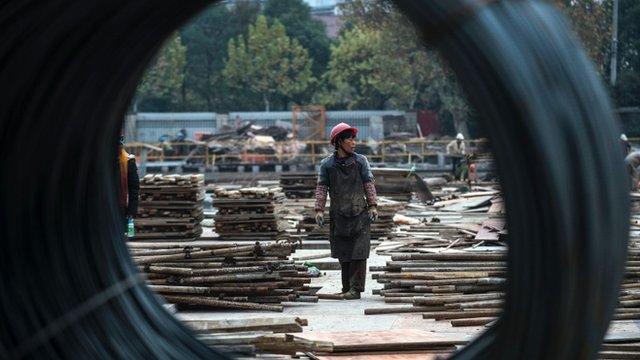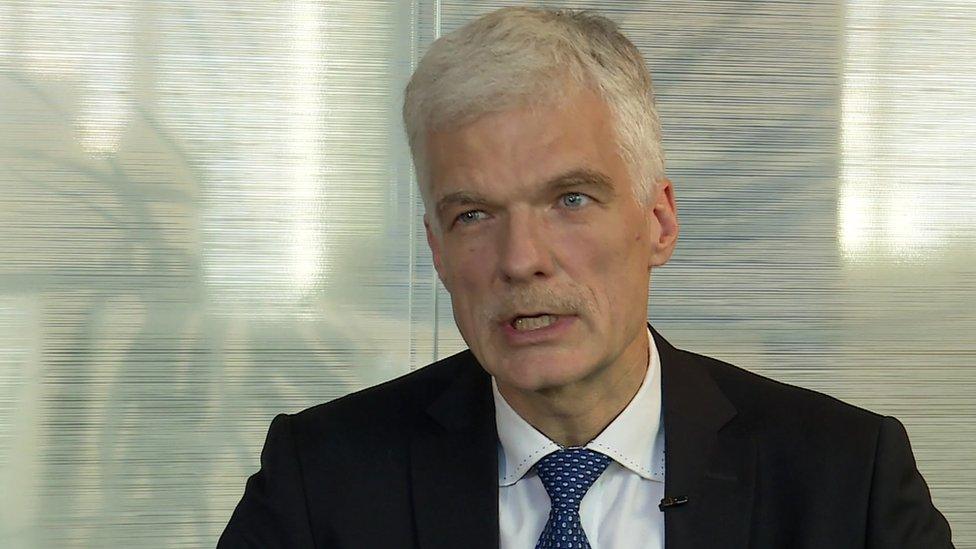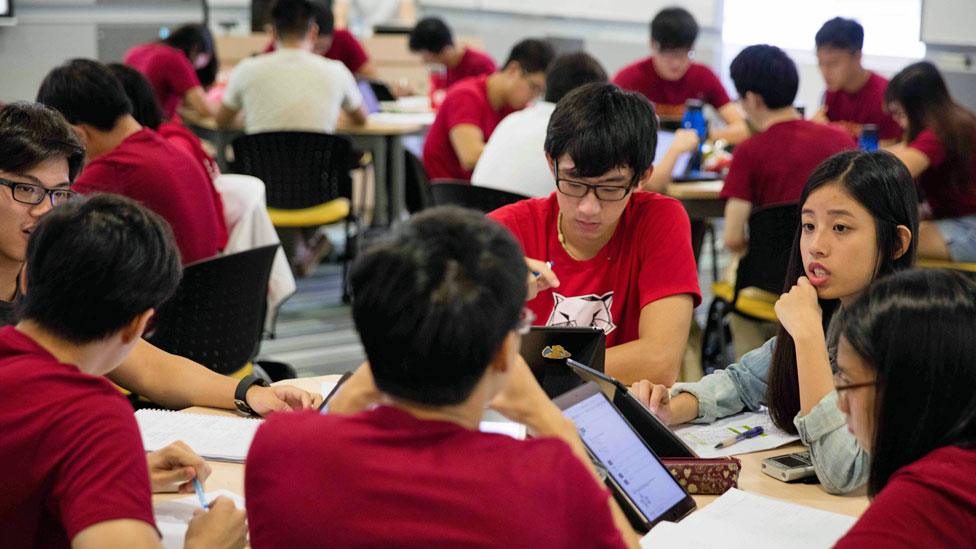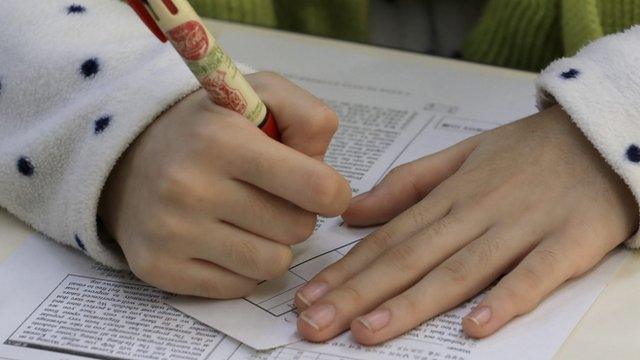Pisa tests: From American Dream to Asian ambition?
- Published

Students from Asian countries have dominated the top places in the latest Pisa rankings
While the "American dream" of social mobility seems nothing more than a dream for many American students, it is emerging as a new reality in much of east Asia.
The latest round of Pisa results, published this week, show that many of the most disadvantaged students in China, Hong Kong, Japan, Korea, Macau, Singapore, Taiwan and Vietnam perform as well as the highest-achieving quarter of students around the world.
In the western world, only Estonia and Finland match such a level of resilience against social disadvantage.
In the previous 2012 tests, Shanghai came out as the top performer among 65 education systems compared in mathematics, reading and science.
Some wondered to what extent Shanghai's success might be unrepresentative of other parts of China.
China still impressive
In the latest tests, Shanghai's results are combined with three other parts of China - and these show strong performances in science, so much so that more than one in 10 of all the highest achieving students, from 68 countries, are from these four provinces in mainland China.
So the world will continue to look to China as a global player in education.

Singapore only marked 50 years of independence last year - and is now top at education
But there are also areas where China can look to other countries for inspiration.
Chinese students excel at content knowledge in science. But it is equally important to be able to "think like a scientist", and Chinese students perform less well in this - although still better than most countries in the west.
That is also reflected in student attitudes - for example, American students seem more science-minded than their Chinese counterparts.

More stories from the BBC's Global education series, external looking at education from an international perspective, and how to get in touch.
You can join the debate at the BBC's Family & Education News Facebook page, external.

They report more frequently than Chinese students that they value scientific approaches to enquiry and adopt a questioning approach.
Skills for an uncertain world
This is important. Education used to be about teaching people facts and theorems, now it's about helping students to develop a reliable compass and the navigation skills to find their own way through an increasingly uncertain, volatile and ambiguous world.

China continues to build: Female construction worker in Shanghai
These days, we no longer know how things will unfold, sometimes we make mistakes along the way. But it will often be the mistakes and failures, when properly understood, that help learning.
An important part of education today is helping students develop positive attitudes towards learning that will endure throughout their lives.
Twice as many students in the United States as in the four provinces of China, and in most other east Asian countries, for example, aspire to work in a science-related career.
That said, many American students will not be able to realise these dreams because they perform poorly in science at school.
But while east Asian students score higher in science, they need to develop more positive attitudes towards science.
What successful systems have in common
Perhaps it has something to do with another finding from the Pisa process - that students in the four Chinese provinces spend close to 57 hours per week studying in school or at home; for students in high-performing Finland it is 36 hours.
Obviously one can't copy and paste school systems wholesale.
But Pisa has revealed a surprising number of features shared by the world's most successful school systems.

Andreas Schleicher says the next round of Pisa tests will focus on skills for a globalised world
For a start, leaders in east Asian education systems have convinced their citizens to make choices that value education.
In east Asia, parents will invest their last resources in educating their children for a brighter future.
In much of the western world, citizens have already mortgaged their children's future, as seen in huge mountains of public debt.
Investing in teachers
Then there is the belief, widespread throughout east Asia, that all children can succeed.
The fact that students in most east Asian countries consistently believe that achievement is mainly a product of hard work, rather than inherited intelligence, suggests how much the social context can make a difference to fostering success.
Nowhere does the quality of a school system exceed the quality of its teachers - and the east Asian school systems all pay great attention to how they select and train their staff.
When deciding where to invest, they prioritise the quality of teachers over the size of classes.
They provide intelligent pathways for teachers to grow in their careers. High-performing countries have also moved on from bureaucratic control and accountability to a great sense of professionalism.
They encourage their teachers to make innovations in how they teach, to improve their own performance and that of their colleagues, and to pursue professional development.
The goal of the past was standardisation and compliance.
But today's top-performing countries value inventiveness.

Singapore has been ranked as having the highest-achieving schools
They focus on outcomes, shifting from looking inwards to the bureaucracy to looking outwards to the next teacher, the next school, to create networks of innovation. You can see that nowhere better than in Finland or Shanghai.
Perhaps the most impressive outcome of world-class school systems is that they deliver high quality across the entire school system so that every student benefits from excellent teaching.
And they align policies and practices across all aspects of the system, making them coherent over sustained periods of time, and ensuring that they are consistently implemented. You can see that nowhere better than in Singapore.

Education systems have to keep adapting to changing demands of the economy
But the demands on modern education systems will not stop here.
Schools now need to prepare students to live and work with people from different cultural backgrounds and to appreciate different ideas, perspectives and values. They will live in a world in which people need to trust and collaborate across such differences.
Those are the reasons why, for the first time, the OECD is putting global competency at the centre of the next Pisa in 2018.
We need to enable students to think for themselves and act for others, to educate the next generation who will create jobs, not just seek them, and to prepare our students to confront the unexpected with intelligence and compassion.